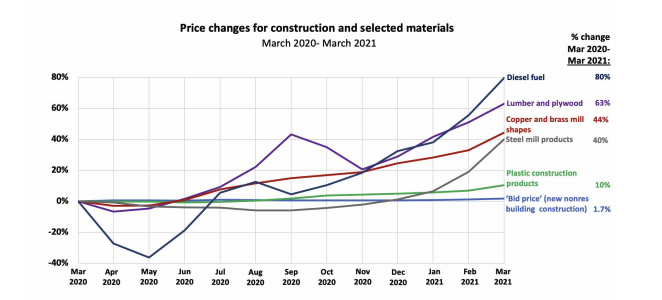BOISE, Idaho — Lumber prices have risen 280 percent since before the pandemic started according to a recent study by fortune.

Homebuilders are dealing with an increase in building supplies and a shortage of material for a variety of different reasons, meanwhile, this is not helping the affordable housing crisis the Treasure Valley is currently facing.
"There are a couple of other things going on and lumber is the most complex," said Bill Rauer of the Idaho Building Contractors Association. "30 percent of the softwood lumber that is used for home building comes out of Canada."
The United States had a 20 percent tariff on Canadian lumber that was reduced to nine percent in December of 2020, but both the Idaho Building Contractors Association and the Associated General Contractors of America say more needs to be done.
“In fact, there are letters going out right now across our membership and other industry associations to say please help us to find a way to get these costs brought down," said Rauer.
There are other factors as well including the pandemic that slowed production and forced labor shortages causing a shortage of lumber, there has been an increase in demand not only from contractors but also the public who built DIY projects during the pandemic, fires at sawmills have had an impact and also communities who rebuilt following natural disasters from hurricanes and wildfires in the past year.

It's not just lumber either, steel, copper, plastic and other materials have also increased in price and on Thursday the Associated General Contractors of America reported that building supplies have increased by 20 percent from this time last year.
The GAC put out a report in April warning builders about construction inflation alert, the graph above shows some of the increases in building supplies, but prices continued to climb even higher in April and ultimately those costs are making homes more expensive.
“And like all manufactured goods all costs that go in are going to be covered by the consumer in some way shape or form," said Rauer. "It’s a very difficult thing and what does that mean for the future? That’s really hard to say.”
Here in Idaho growth continues to be an issue and this problem adds even more challenges as there are no signs of demand slowing down, Rauer told us homes available for sale are down more than 70 percent locally.
“The rise in demand has been coming for the last several decades and it has just hit a fever pitch," said Rauer. "The pandemic for those folks who were thinking maybe we should move to Idaho, when the pandemic hit they said we are moving to Idaho."
Another piece to this puzzle is when people were able to work from home it gave many people the flexibility to move out of the big cities.




